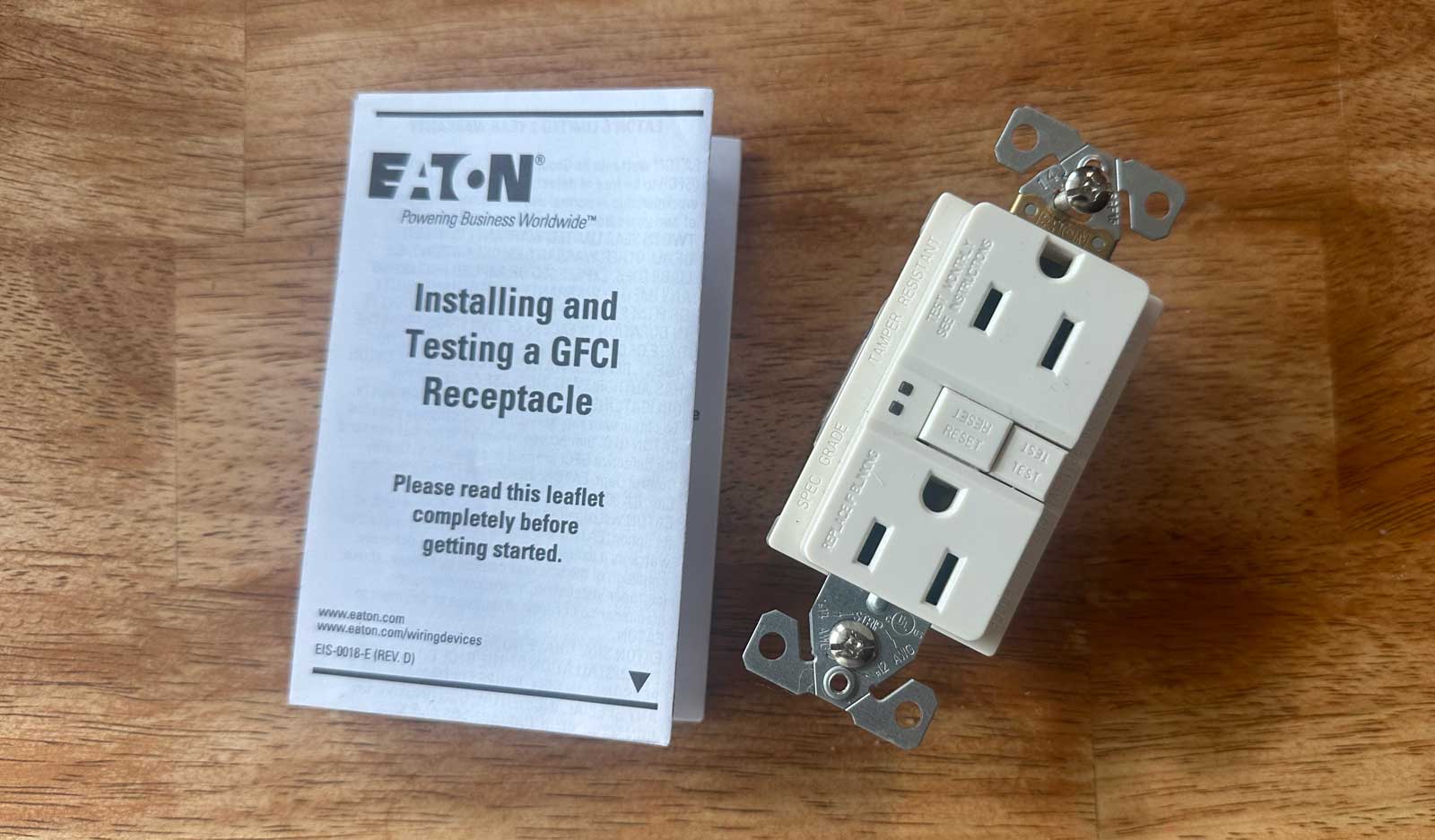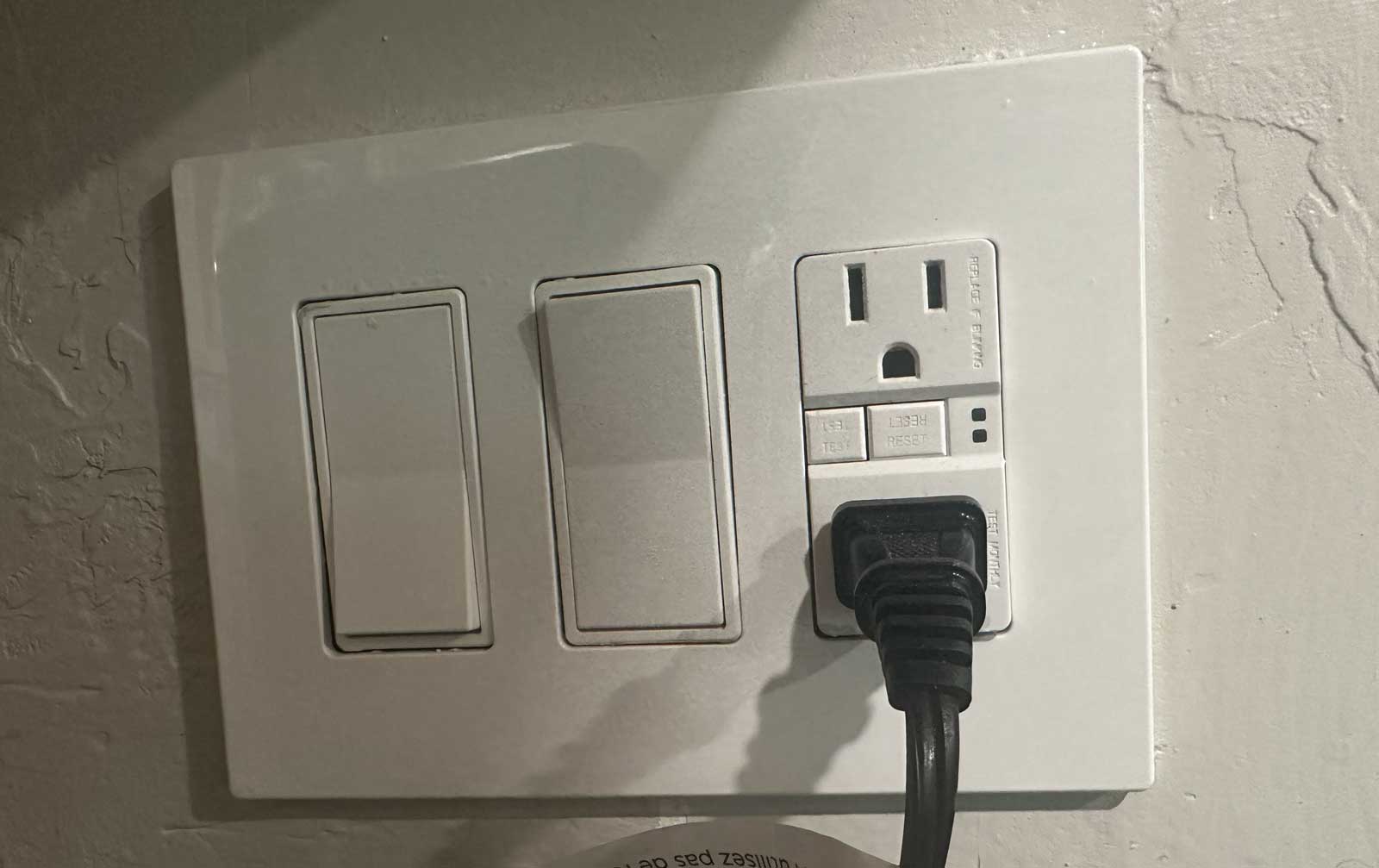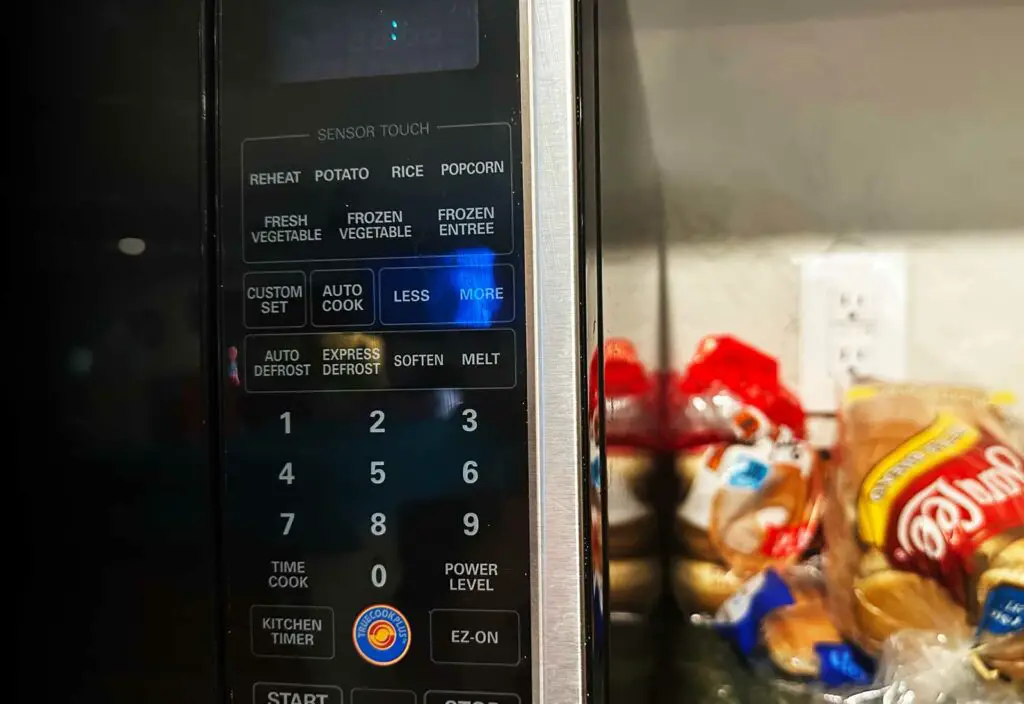Do you smell that? It’s the aroma of a burning question that’s been left in the microwave of your brain for too long:
Does a microwave need a GFCI outlet?
Yes, for safety reasons, it’s generally recommended that a microwave should be plugged into a Ground Fault Circuit Interrupter (GFCI) outlet.
However, this may depend on your local building codes and the specific power requirements of your microwave.
However, let’s not let the timer beep just yet.
But why?
Why does a GFCI outlet matter so much?
Can a microwave really trip a GFCI?
Do other appliances also need GFCI protection?
In this article, we’re about to embark on an electrifying journey, navigating through the intricate maze of electrical safety and microwave usage.
Ready to handle the heat? Let’s embark on this electrifying exploration and become masters of microwave safety.
- Yes, for safety reasons, it’s generally recommended that a microwave should be plugged into a Ground Fault Circuit Interrupter (GFCI) outlet.
- The need for GFCI protection may depend on your local building codes and the specific power requirements of your microwave.
- GFCI outlets continuously monitor electrical current and swiftly shut down the system at the first sign of trouble, protecting you from electrical shocks.
- AFCI breakers prevent electrical fires by detecting and stopping dangerous arcs in your circuit.
- The National Electrical Code (NEC) provides guidelines for safe electrical installation in homes and businesses.
- Microwaves, being powerful appliances and often located near water sources in kitchens, are prime candidates for GFCI protection.
- Outlet selection for microwaves should consider location, size of the microwave, and the level of safety required.
By the way – before we get too far along here, if you want to connect with other homeowners, DIYers, and builders and get more great ideas for your home to make your space the best join my free private Facebook group, Remodel Reality here.
 Back to Basics: Understanding Your Home’s Silent Protectors
Back to Basics: Understanding Your Home’s Silent Protectors
Are you ready to get to the root of your electrical quandaries? Let’s roll up our sleeves and jump into the essential components of home electrical safety.
GFCI (Ground Fault Circuit Interrupter): Your Personal Electric Lifeguard
There’s a quiet guardian in your house working 24/7 to ensure your safety around electricity.
This guardian’s name? The GFCI outlet.
Not exactly a catchy moniker, but it does a crucial job.
It continually monitors electrical current, and like a dedicated lifeguard, it swiftly shuts down the system at the first sign of trouble (such as a ground fault).
This vigilance helps protect you from the shock of your life—literally.
AFCI (Arc Fault Circuit Interrupter): The Firefighter in Your Electrical System
Next up, meet the AFCI.
Its job? To prevent electrical fires by promptly detecting and stopping dangerous arcs in your circuit.
You could say the AFCI is like a firefighter, ever watchful and ready to snuff out any spark of danger.
Together, the GFCI and AFCI work to keep you safe from electrical shocks and potential fires.
National Electrical Code: The Blueprint for Electrical Safety
Lastly, we need to talk about the National Electrical Code (NEC).
Think of it as the blueprint for electrical safety in homes and businesses across the country.
This comprehensive guide helps electricians to safely and correctly install electrical systems, ensuring that your home is as safe as it can be.
Staying within NEC guidelines isn’t just wise—it’s also required.
After all, nobody wants a surprise visit from a building inspector.
We’re just getting warmed up.
Stick around as we delve into the specifics of microwaves and GFCI outlets.
The details may surprise you.
Zapping the Risks: Why Your Microwave Needs GFCI
Ever wondered what lies beneath the ordinary hum of your kitchen’s unsung hero, the microwave? There’s more to it than reheating leftovers and popcorn sessions.
High Risk, High Stakes
Let’s face it:
The kitchen can get pretty hectic.
Between all the slicing, dicing, and washing and cooking, there’s plenty of room for unpredictability.
And where there’s unpredictability, there’s risk.
When we talk about microwaves, we’re not just talking about an ordinary appliance.
Microwaves, are powerful beasts that can heat up your leftover pizza in no time flat.
But with great power comes…
you guessed it, greater risks.
So, here’s the deal – because of their close proximity to water sources (think kitchen sinks and dishwashers), microwaves are prime candidates for GFCI protection.
It’s All About Location
As they say in real estate, it’s all about location, location, location.
But guess what? This also rings true for our dear microwaves.
Where you place your microwave can greatly impact its need for GFCI protection.
Have your microwave outdoors? You bet you need GFCI.
Sitting next to the laundry machine? Yup, GFCI could be a wise move.
Even a microwave stationed near your treasured espresso maker might benefit from a bit of extra protection.
Because, you never know when that latte might decide to stage a rebellion.
The Power-Hungry Predicament
Alright, let’s talk about one more thing: power.
Microwaves are notorious power-guzzlers.
These hefty appliances can place quite a burden on your home’s electrical circuits.
And if you’ve ever had to deal with a tripped breaker, you know it’s about as much fun as a bucket of cold water on a winter morning (or a fresh latte spill on your new white shirt).
By implementing GFCI protection, you can mitigate these power-induced risks and keep your circuits (and microwave) functioning smoothly.
The Outlet Challenge: Tailoring Your Microwave’s Power Throne
Did you know there’s more than one way to plug in a microwave? In fact, you’ve got options galore.
From a standard electrical outlet to a safety-enhanced GFCI receptacle, and even the solo performer, the single outlet – you’re spoiled for choice.
But this isn’t a game of “eeny, meeny, miny, moe.” Choosing the right outlet for your microwave involves understanding these options and knowing which one suits your needs best.
Outlet Selection: More Than Just a Game of Tag
Sure, you might think choosing an outlet for your microwave is as simple as tag—you’re it! But hold on just a second.
There’s a whole lineup of factors waiting in the wings, ready to steal the show.
Think about the location of use – is this a residential kitchen or a bustling business cafeteria? Consider the size of your microwave – a compact model might be fine with a standard electrical outlet, but a larger unit could demand a more robust connection.
And don’t forget the level of safety needed – remember our friend, the GFCI receptacle? In a high-risk environment (like next to your kitchen sink), it could be a real lifesaver.
Consider these factors, and you’ll be on your way to choosing the perfect outlet for your microwave.
 Tripping Over GFCI? Here’s Your Handy Troubleshooting Guide
Tripping Over GFCI? Here’s Your Handy Troubleshooting Guide
We’ve all experienced that frustrating moment when our lunchtime plans are disrupted by a GFCI trip that interferes with the microwave’s operation.
Fear not, as this section serves as your ultimate troubleshooting guide to navigate through this common challenge.
From pressing the reset button to knowing when to call a licensed electrician, we’ll equip you with the knowledge to swiftly overcome GFCI hurdles and ensure a smooth microwave experience.
When Your Microwave and GFCI Play Tag
We’ve all had that day.
You pop your lunch in the microwave, only for your GFCI to play the spoiler.
This is no random game of tag—it’s a classic case of a GFCI trip.
But don’t worry.
With a few troubleshooting tips up your sleeve (and the reset button on your GFCI), you can turn this little blip into nothing more than a short interruption.
Let’s walk through this together.
From Reset Buttons to Calls for Backup: Navigating GFCI Hurdles
So, your microwave tripped a GFCI.
Don’t worry.
First, try the simplest solution.
You’ll usually find a reset button on your GFCI. Give it a press, and see if that resolves the issue.
If not, you might be dealing with a more complex problem. In that case, you’ll need to bring in the big guns.
And by that, I mean a licensed electrician.
Trust me, complex electrical issues are no place for DIY bravado.
Remember, safety first!
Your Safety Net: A Licensed Electrician
Think of a licensed electrician as your safety net.
They’ve got the skills, training, and experience to tackle those gnarly electrical problems that go beyond a simple reset.
So, if your microwave keeps playing tag with your GFCI, despite your best troubleshooting efforts, it’s time to call in the pros.
Leave the high-risk stuff to them.
Your job? Sit back, relax, and wait for the popcorn.
A Shock-Proof Kitchen? Understand Your Kitchen’s Electrical Requirements
There’s no way around it: kitchens are power hungry.
Your large appliances like your fridge, dishwasher, and stove all need their own dedicated circuits.
You wouldn’t make your kids share a single scoop of ice cream, would you? No way.
It’s the same for your kitchen appliances.
When they have their own branch circuits, you prevent overloading, which reduces the risk of tripping your breaker or causing an electrical fire.
Safety first – it’s not just a slogan.
To GFCI or Not to GFCI: Other Kitchen Appliances
When it comes to smaller kitchen appliances like your coffee maker or toaster oven, GFCI protection is still crucial.
Unexpected things happen, especially around water.
And let’s be real – your kitchen sink isn’t exactly a hop, skip, and a jump from your coffee maker.
Ensuring your outlets have GFCI protection reduces the risk of shock, giving you peace of mind every time you make your morning brew.
The Golden Rule: Stick to Your Local Codes
Adhering to local codes isn’t just about ticking off a box.
These codes exist to ensure electrical safety and prevent hazards.
So, whether you’re installing a new electric range or just putting in a fancy new toaster, make sure you’re up to code.
Because the only surprise you want from your kitchen is that secret ingredient in your grandma’s famous cookies, not an unexpected jolt of electricity.
Related & Frequently Asked Questions: Your Quick Guide to Kitchen Electrical Safety
The world of kitchen electrical safety is filled with plenty of jargon and technicalities.
I’m here to help you navigate the ins and outs (or should I say the currents and wires) of your kitchen’s electrical needs.
Let’s plug into some of your most frequently asked questions.
Q: What does not require GFCI?
A: Ground-fault circuit interrupters (GFCI) are safety devices designed to shut off an electrical circuit when they detect that the current is flowing along an unintended path, such as through water or a person.
In the United States, local building codes usually require GFCI outlets in wet areas, like bathrooms, kitchens, and laundry rooms.
However, large appliances like refrigerators and built-in ovens often do not need GFCI outlets.
Always check your local codes for precise requirements.
Q: Will a microwave trip a GFCI or AFCI breaker?
A: Both GFCI and AFCI breakers protect against different electrical faults.
GFCI outlets are designed to trip when they detect a ground fault.
As for AFCI breakers, they protect against arc faults.
Some large microwaves, especially new inverter microwave ovens, might occasionally trip either type of breaker due to the high power they use.
Q: What is the best outlet for a microwave?
A: Typically, microwaves require a dedicated 20-amp circuit, preferably with a GFCI or AFCI for safety.
However, the specific type of outlet might vary depending on the microwave model and local codes.
For countertop microwave ovens, using GFCI protected outlets on kitchen countertops is a common practice.
Built-in microwave models might have different requirements, so it’s always a good idea to check the manufacturer’s recommendations.
Q: How many amps are required for a microwave?
A: The short answer is that it depends on the microwave.
Most countertop and over-the-range microwave models require a dedicated 20-amp circuit.
But remember, it’s always important to check the manufacturer’s specifications for the exact amp rating.
Q: Does a refrigerator need a GFCI or AFCI?
A: Refrigerators can be plugged into a regular outlet without GFCI protection, though some newer or local codes may require GFCI or AFCI protection.
While it’s generally a good idea for safety reasons, bear in mind that GFCI outlets can sometimes trip from the electrical currents refrigerators pull, causing your food to spoil.
Remember to always consult with a licensed electrician or your local building codes when it comes to your home’s electrical wiring.
Next Steps
Want to join others who are creating the most amazing home redesigns & renovations and get more tips, tricks and hacks on how to make your home the best it can be?
Join my brand new free private Facebook group, Remodel Reality to connect with other people like you to make your space the best!






